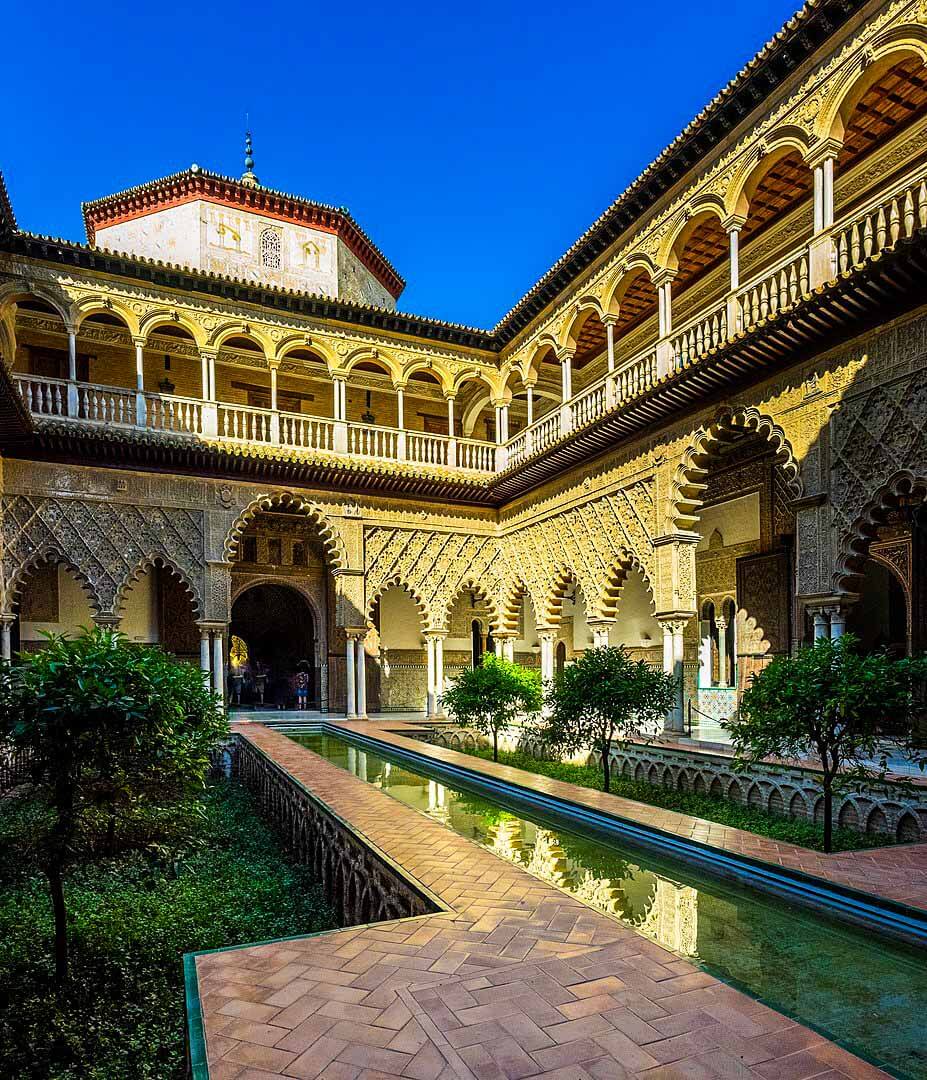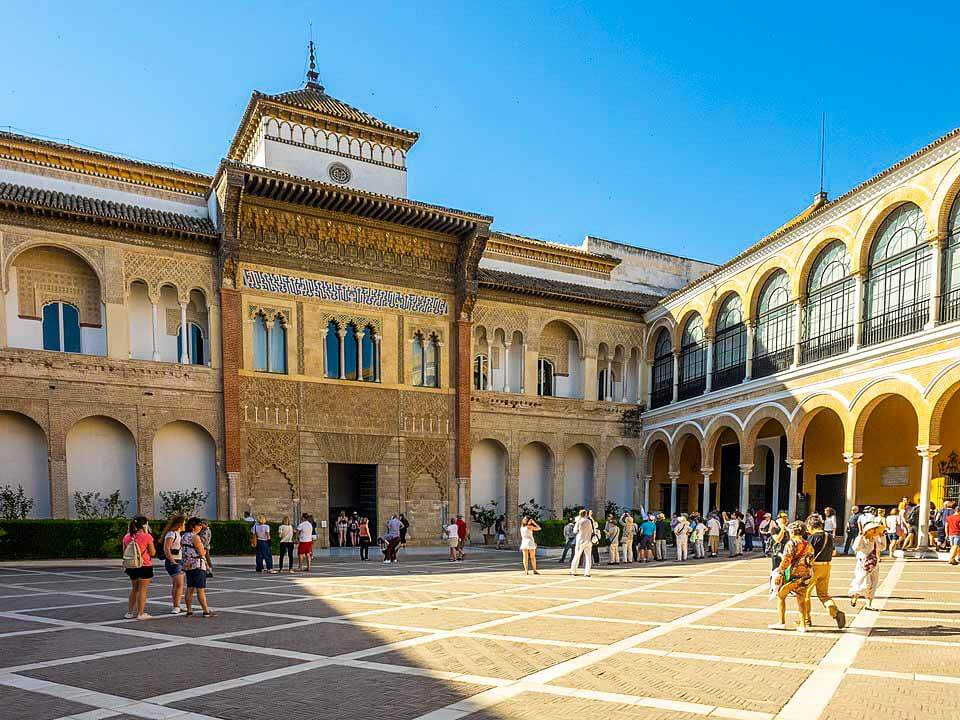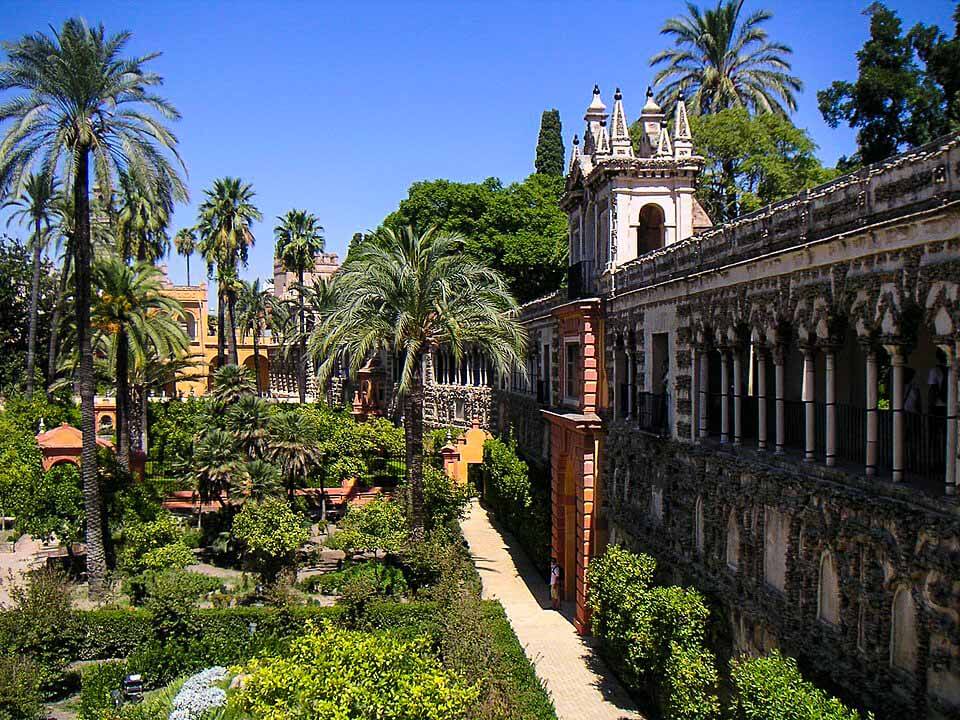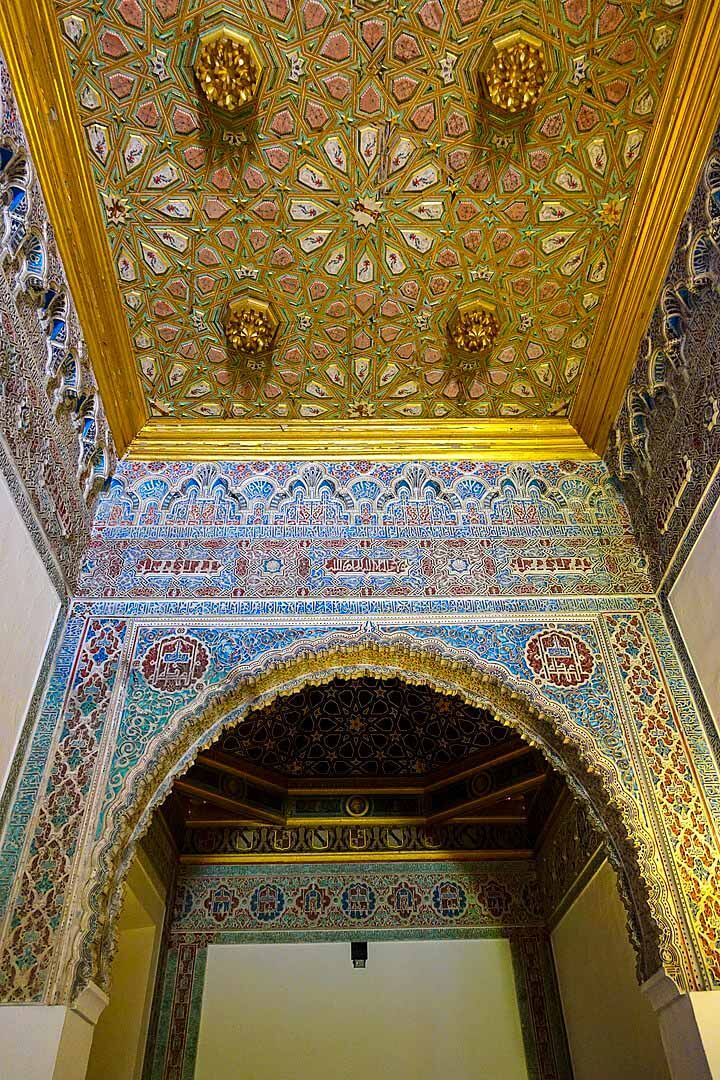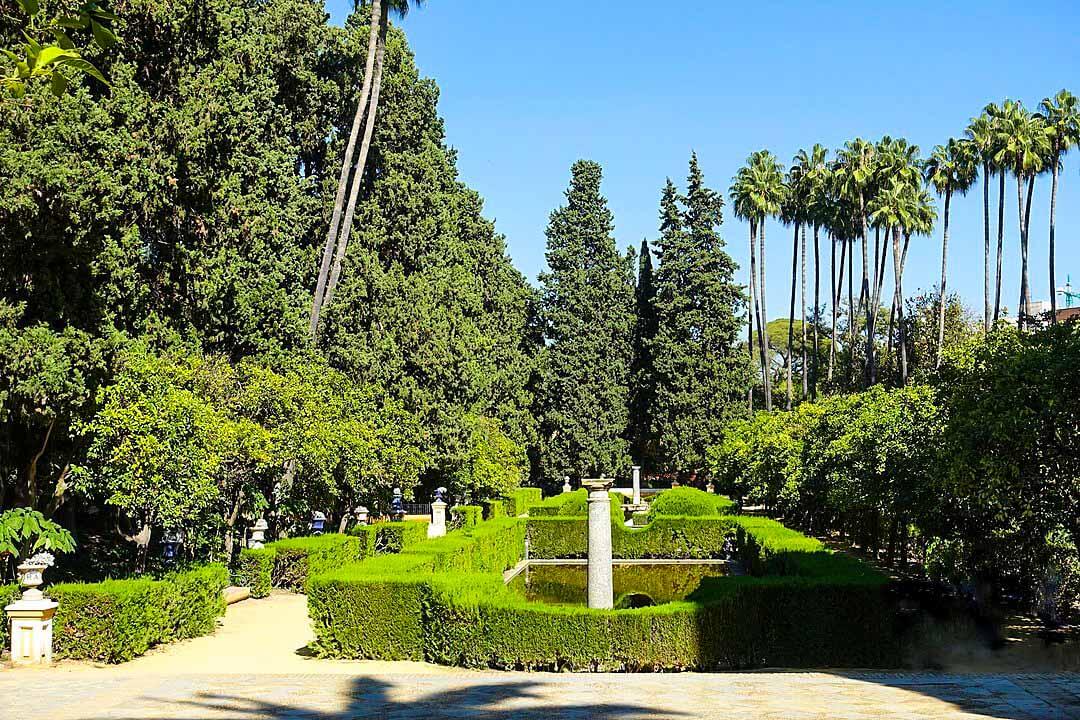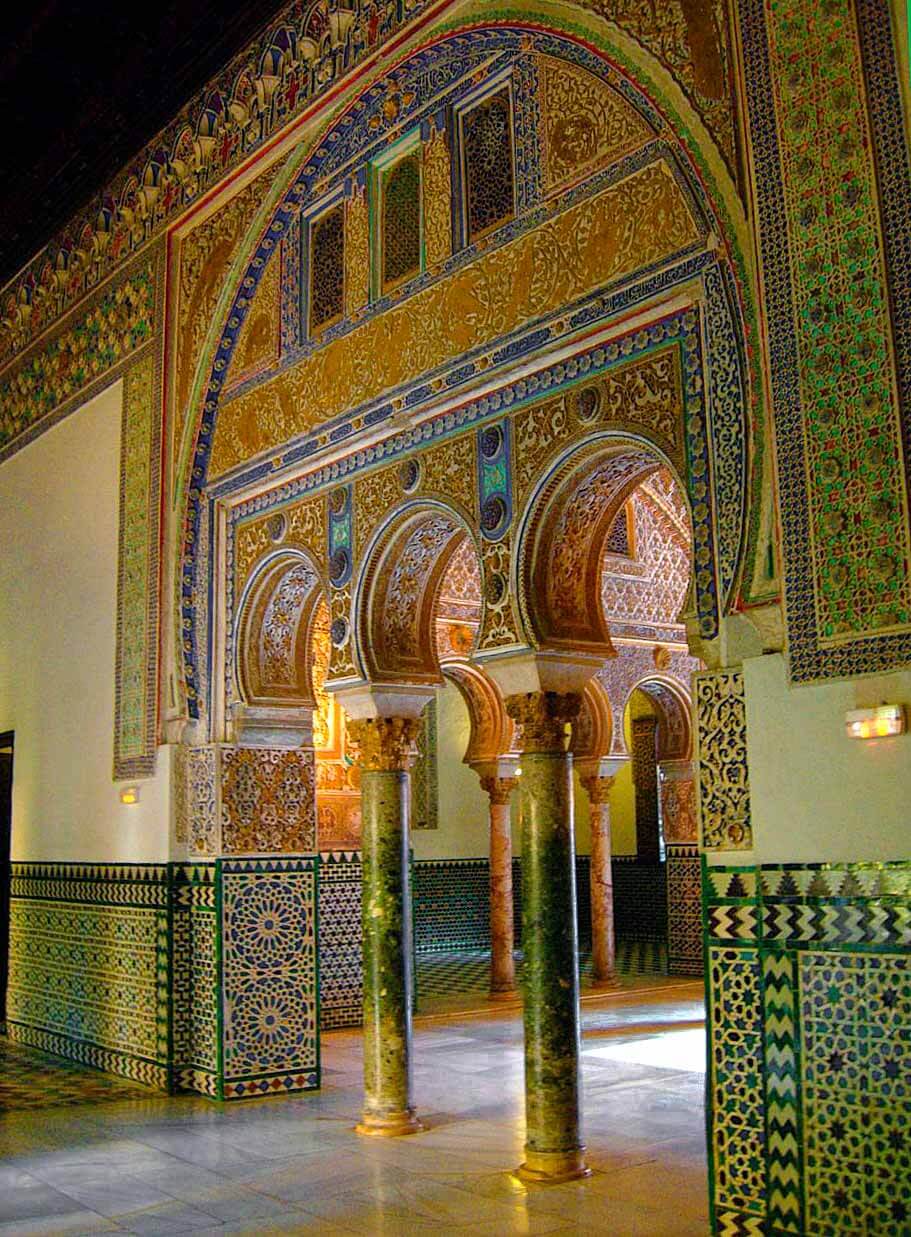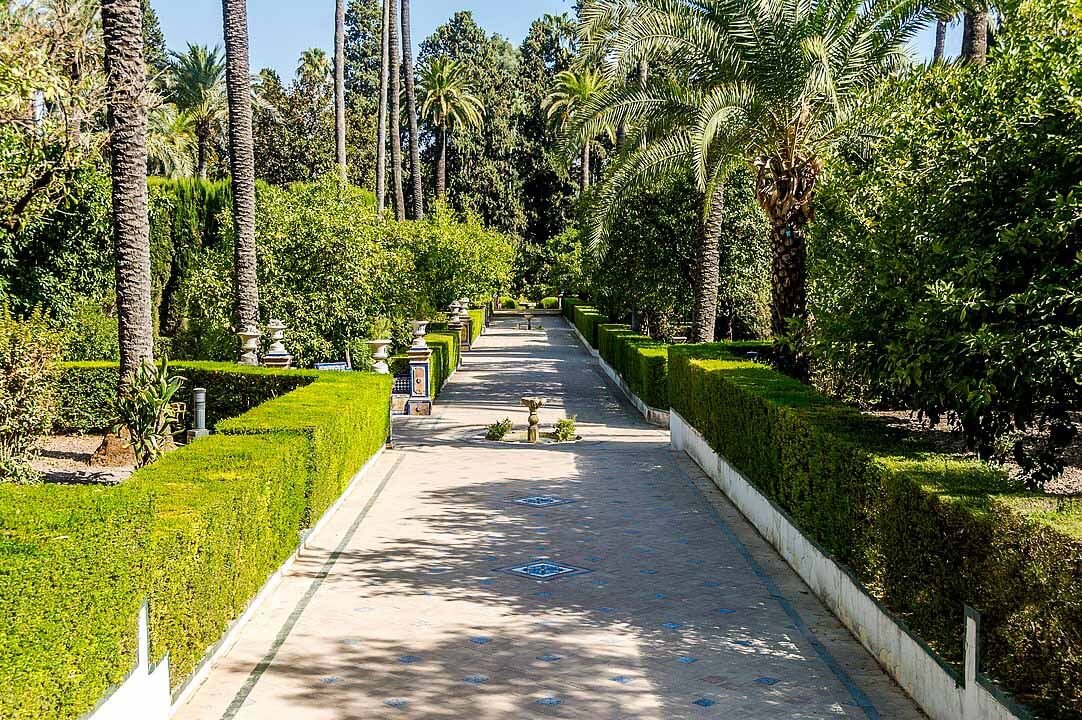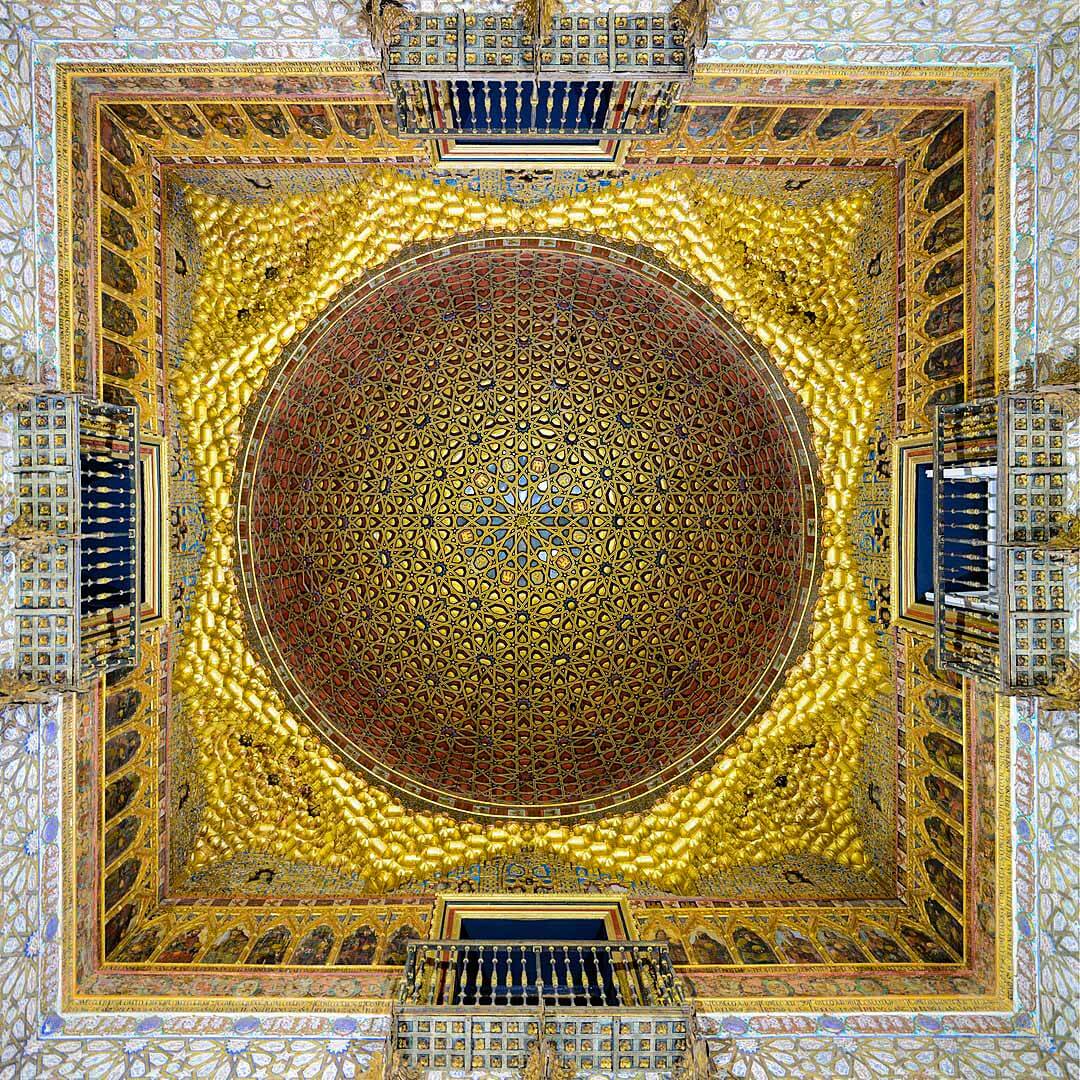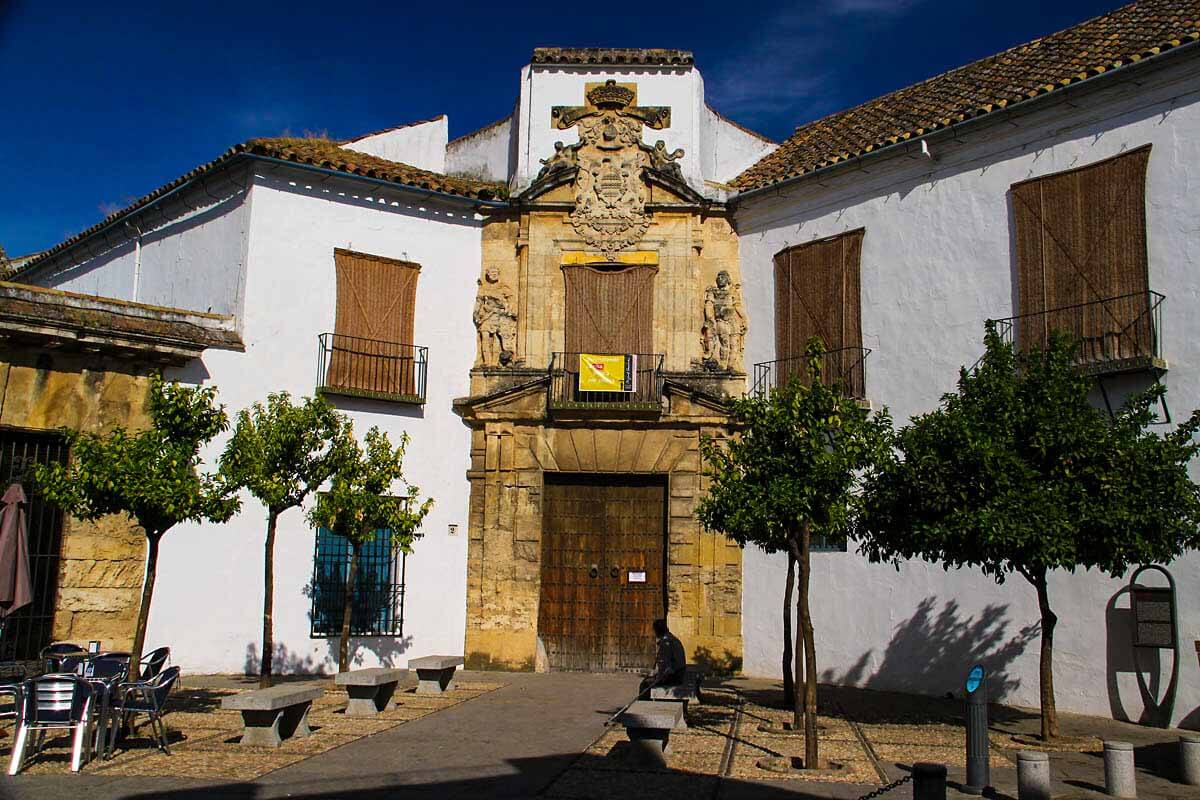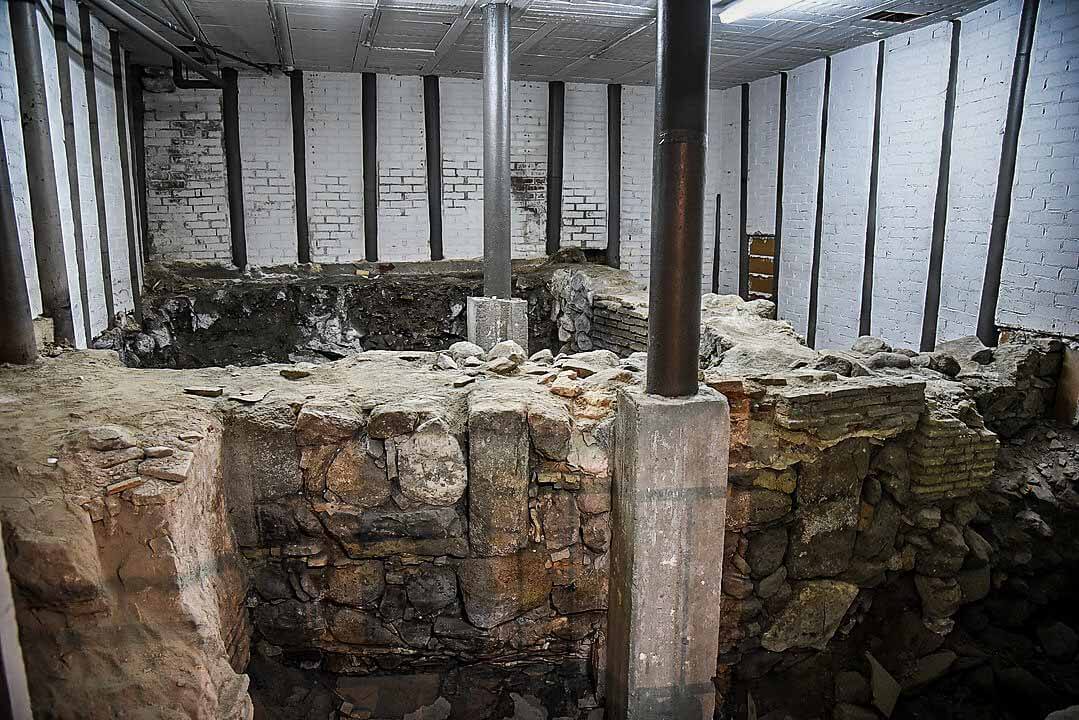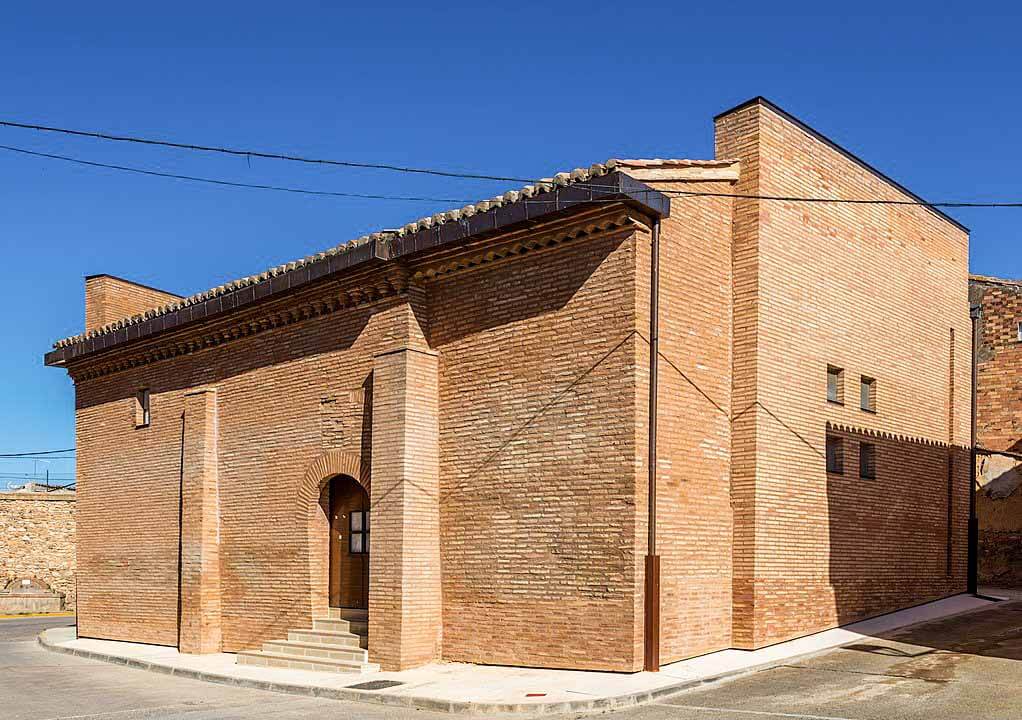Seville, Spain
Coordinates: 37.383889, -5.991389
The Royal Alcázars of Seville, historically known as al-Qasr al-Muriq (The Verdant Palace) and commonly known as the Alcázar of Seville, is a royal palace in Seville, Spain, built for the Christian king Peter of Castile.
It was built by Castilian Christians on the site of an Abbadid Muslim alcazar, or residential fortress destroyed after the Christian conquest of Seville.
The palace is a preeminent example of Mudéjar architecture (originally the term used for Moors or Muslims of Al-Andalus)
It was registered in 1987 by UNESCO as a World Heritage Site, along with the adjoining Seville Cathedral and the General Archive of the Indies
The palace itself is magnificent with all the decorative art with Koranic scriptures written all over.
History
In the year 712, Seville was conquered by the Umayyad Caliphate. In the year 913, after a revolt against Cordoba’s government, the first caliph of Andalusia Abd al-Rahman III built a fortified construction.
As Seville was established as the capital of Al-Andalus, the Almohade caliphs made the Alcazar their main residence.
With the exception of the walls, the previous buildings were demolished, and were carried out up to a total of twelve palaces.
With the start of the Christian era in Seville, the Alcazar was converted into the residence of the Christian monarchs.
Changes were made to the constructions to fit the needs of the monarchs and the court life.
In the years 1364-1366, king Pedro I built the Mudéjar Palace, an example of the Andalusian Mudejar style.
Under the Catholic rulers Isabella and Fernando, the upperfloor was extended and transformed into the main residence of the monarchs.
The Real Alcázar (then known as Dar al-Imarah) is the oldest palace in Europe still used as a royal residence.
Craftsmenship
King Pedro the Cruel (who earmt the name for murdering all the half-siblings standing between him and the throne) hired Muslim builders and craftsmen from the Nasrid court of Granada to create the finest examples of Mudéjar art in Spain.
These craftsmen apparently without the king even realising, repeatedly carved the Nasrid motto ‘Wa la ghaliba illa Allah’ (‘And none is victor save Allah’) all over the palace complex, adding small crosses to the Arabic, perhaps to disguise the meaning. Elsewhere there are oft-repeated praises of Allah, sometimes coupled with praises to King Pedro.
The gate to the Dar al-Imarah palace has been bricked up, but visitors can plainly see the original sandstone horseshoe arch, while the turrets of this defensive fortress are visible from the Plaza del Triunfo.
Inscribed on the walls of the Chamber are the Arabic words “Allah is (our) Refuge, Bliss, (and) continual prosperity: Praise be to Allah for His goodness”.
The Patio de Yeso (Stucco Courtyard) is a beautiful example of Almohad architecture, especially due to the triple arches and sebqa (rhombus mesh) decoration, a style much repeated in other places in Spain and especially in the Alhambra.
Under the rule of the petty kings, Seville prospered even more than before; these taifa rulers extended the Alcázar and renamed it the Qasr al-Mubarak (the Blessed Palace).
A statue dedicated to King AI-Mu’tamid stands in Jardin de la Galera (the Garden of the Galley) alongside quotes from one of his poems: “Allah grant that I may die in Seville and that our graves be opened there on the Day of) Resurrection”. A poignant memorial for a king whose life after the fall of his beloved city was so impoverished that his wife and daughters had to become seamstresses.
Hall of the Ambassadors
The Hall of the Ambassadors, was build by Seville craftsman Diego Ruiz in 1389, following the orders of Pedro I.
The room mainly uses a Moorish style as the bottom half of the room is rich with Islamic geometric patterns. However, the top half is decorated by methods that are traditional to Western architecture.
Patio of the Maidens
Patio of the Maidens, Located near the Patio of the Dolls, derives its name from an old local legend that mentions that this pond was originally filled with the tears of 100 Christian virgins as means to pay tribute to the Muslims.
Know This
The Real Alcázar de Sevilla is a very large complex, and can get crowded. It is recommended purchasing your tickets ahead of time, and for an early timeslot.


